Back pain gardening? 10 ways to avoid back pain while gardening
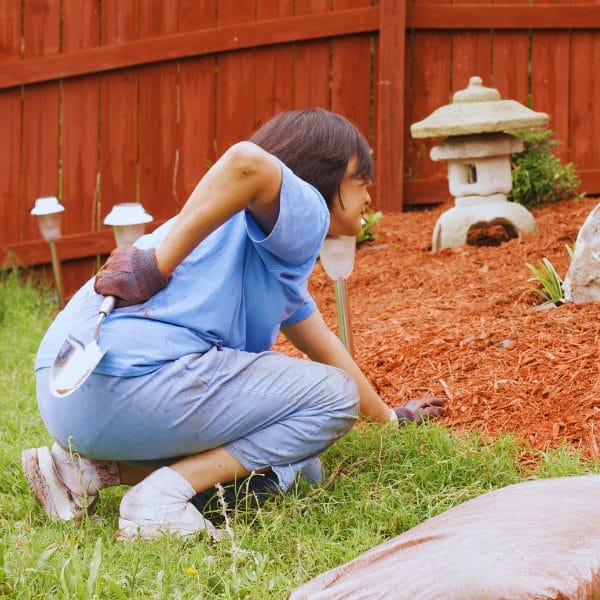
Did you know that gardening can be bad for your back? It’s true! In fact, many people experience back pain while gardening. But don’t worry – there are ways to avoid back pain while gardening.
Bending Forward: Know how to bend and lift properly
One of the leading causes of lower back pain while gardening is lifting heavy objects improperly. So, bend at your knees and not your waist when lifting something heavy.
PostureGeek.com Tweet
One of the leading causes of lower back pain while gardening is lifting heavy objects improperly. So, bend at your knees and not your waist when lifting something heavy. And when carrying a heavy object, hold it close to your body.
What is a proper bending technique?
While there are many variables to consider when bending, there are a few elements that will minimize the chances of injury:
- Stand with your feet shoulder-width apart, knees slightly bent.
- Bending at your hips, not your waist, keeping your back straight.
- As you bend, extend your arms out in front of you to help balance yourself.
- Once you reach the ground, lift the object by straightening your legs, not your back.
As always, seek professional assistance and advice if you feel discomfort or are unsure how to proceed.
Learn proper gardening techniques
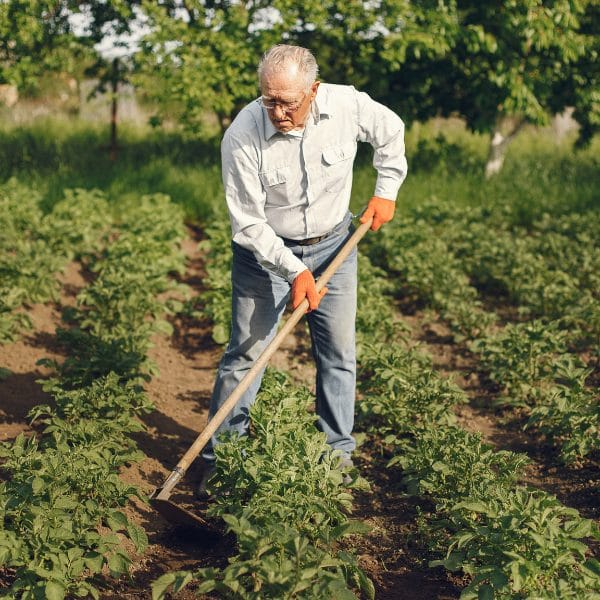
Certain techniques can help reduce back pain. For example:
Twisting: Avoid twisting your spine
Another common cause of low back pain is twisting your spine. So, when gardening, be aware of how you’re moving your body and try to avoid any sudden or jerky movements. Instead, move smoothly and slowly.
If you need to turn around, do so by moving your feet first and then your whole body. Avoid twisting at the waist.
Also, when digging in the dirt, be sure to face the direction you will be digging in. This will help you avoid having to twist your spine.
Reaching: Use a stool or step ladder
When reaching for something, avoid leaning forward from the waist. Instead, use a stool or step ladder to help you reach. This will take the strain off your back and help you avoid back pain.
Pushing: Use your legs, not your back
Use your legs, not your back, when pushing a lawn mower or other garden equipment. Pushing with your legs will help you avoid putting strain on your back.
Also, when using a wheelbarrow, be sure to push it in front of you, not behind you. This will help you keep your back straight and avoid pain.
Pulling: Use your legs, not your back
Just like when pushing something, you should use your legs, not your back, when pulling garden equipment or objects. This will help you avoid putting strain on your spine.
Don’t garden for too long
Gardening is great exercise, but like any exercise, it’s essential to not overdo it. If you garden for too long, you may start to experience back pain. So, take regular breaks and don’t garden for more than an hour or two at a time to help your muscles recover. Frequent breaks will also help you avoid getting too tired, which can lead to injury.
Wear the right gear
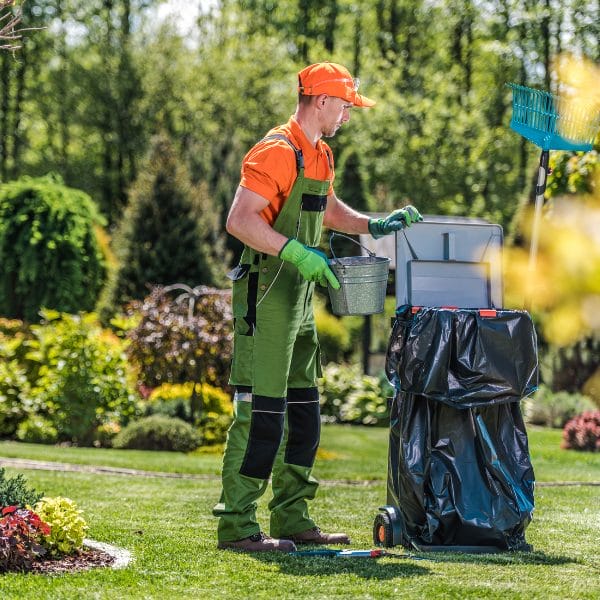
When gardening, be sure to wear comfortable, supportive shoes. And if you’re going to be kneeling or sitting for long periods, consider wearing knee pads or a gardening cushion.
Use the right tools
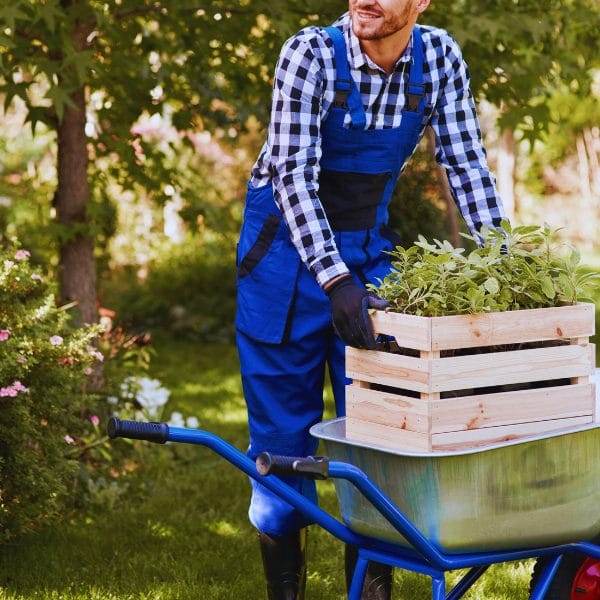
Using the right tools can also help reduce aches and pains.
For example:
- Use a lightweight garden hose instead of a heavy one.
- When using a shovel, choose one that’s the right size for you.
- A Knee Pad can also be very helpful when gardening, as it can help reduce the strain on your knees and avoid pain.
- Long handled tools can also help you avoid having to bend over too much.
- Garden carts and wheelbarrows can help you avoid having to lift heavy objects.
- Raised beds can help you avoid having to bend over too much.
- And finally, consider using an electric or battery-operated garden tool instead of a manual one. This can help reduce the amount of strain on your body.
Warm up before you start gardening
Just as you should warm up before any exercise, you should also warm up before gardening. A simple way to do this is to take a walk around the block or do some light stretching.
Stretch and exercise your lower back muscles to alleviate pain
Lower back pain can be caused by weak or tight lower back muscles. So, it’s essential to exercise and stretch these muscles.
Strengthening and stretching exercises for your lower back muscles can help reduce back pain. There are many exercises and stretches you can do to achieve this.
For example, you can try the following:
The Cat-Cow Stretch:
- Get on your hands and knees with your back straight.
- Round your back up towards the ceiling and hold for 5 seconds.
- Return to the starting position and arch your back in the opposite direction.
- Hold for 5 seconds and return to the starting position.
The Superman Exercise:
- Lie on your stomach with your arms and legs extended.
- Raise your arms and legs off the ground.
- Hold this position for 5 seconds and then return to the starting position.
The Child’s Pose:
- Start in a kneeling position.
- Lower your buttocks down to your heels and reach your arms out in front of you.
- Hold this position for 30 seconds.
Relax your muscles after gardening
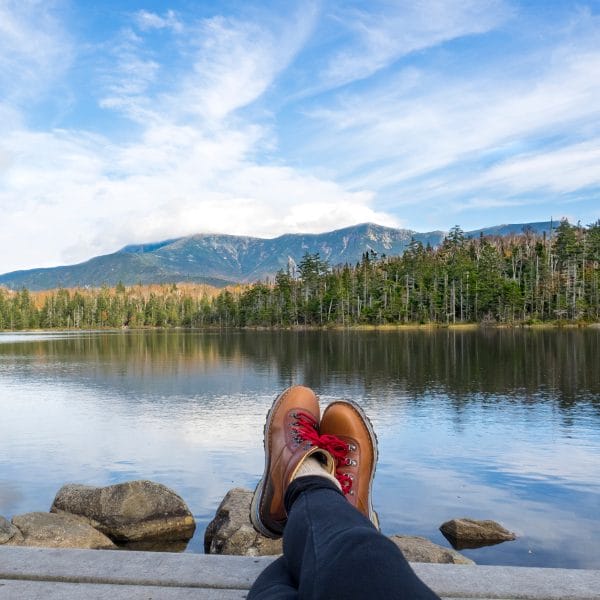
Once you’re done with your physical activity, be sure to relax your muscles. A simple way to do this is to take a warm bath or shower.
Ask for help from friends and loved ones
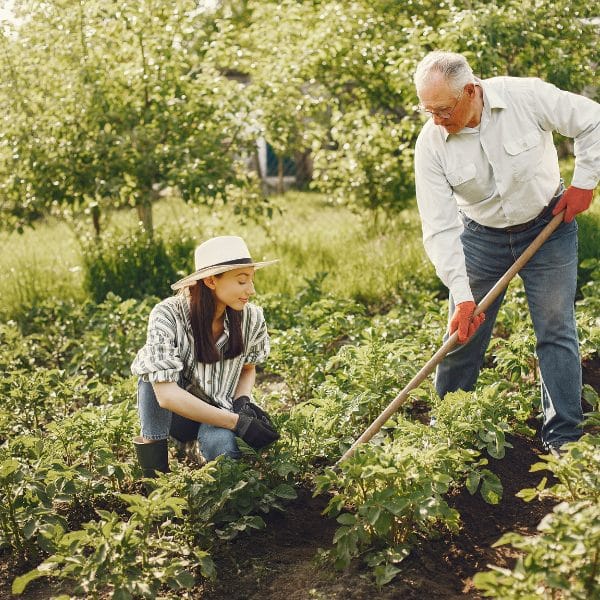
If you have back pain while gardening, don’t be afraid to ask for help from friends and loved ones. They can help you with tasks such as lifting heavier objects (such as heavy pots) or reaching high-up items.
Complete a little bit at a time

If you have a large gardening project, don’t try to do it all at once. Instead, break it up into smaller tasks and spread them out over a few days. This will help reduce back pain and possibly avoid injury.
When to stop gardening
Suppose you experience back pain (both lower and upper body) that lasts for more than a day or two. In that case, it’s time to stop gardening and see a doctor or other recognized health care provider. Gardening pain can be caused by a number of things, from as simple as a muscle strain to more serious issues such as a herniated disc or spinal stenosis.
Stop gardening immediately and see a doctor if you experience any of the following:
- Intense and/or sharp pain
- Numbness or tingling in your legs or arms
- Weakness in your legs or arms
- Loss of bladder or bowel control
If you’re experiencing any of these symptoms, it’s important to see a doctor, physical therapist, or other recognized health care provider immediately, as they could be signs of a severe condition.
Finally
Gardening is a great way to get exercise and enjoy the outdoors. But it’s important to take steps to avoid back injury or pain. Following the tips above can help reduce your risk of developing back pain while gardening.
PLEASE NOTE
PostureGeek.com does not provide medical advice. This information is for educational purposes only and is not intended to be a substitute for professional medical attention. The information provided should not replace the advice and expertise of an accredited health care provider. Any inquiry into your care and any potential impact on your health and wellbeing should be directed to your health care provider. All information is for educational purposes only and is not intended to be a substitute for professional medical care or treatment.
